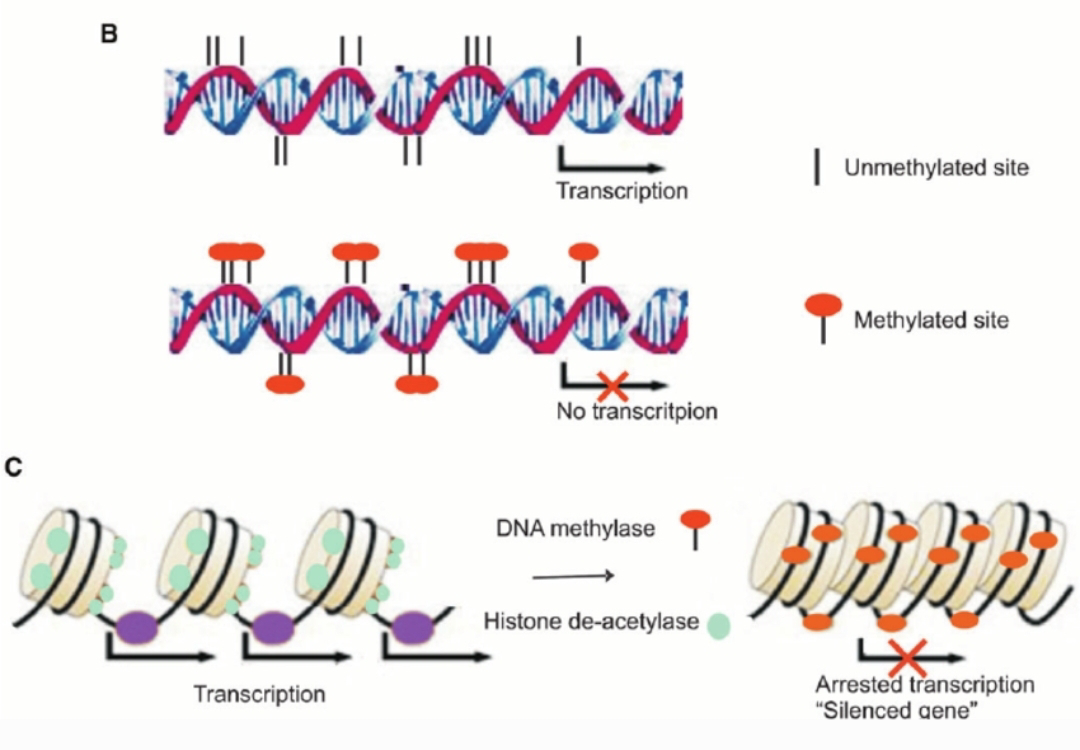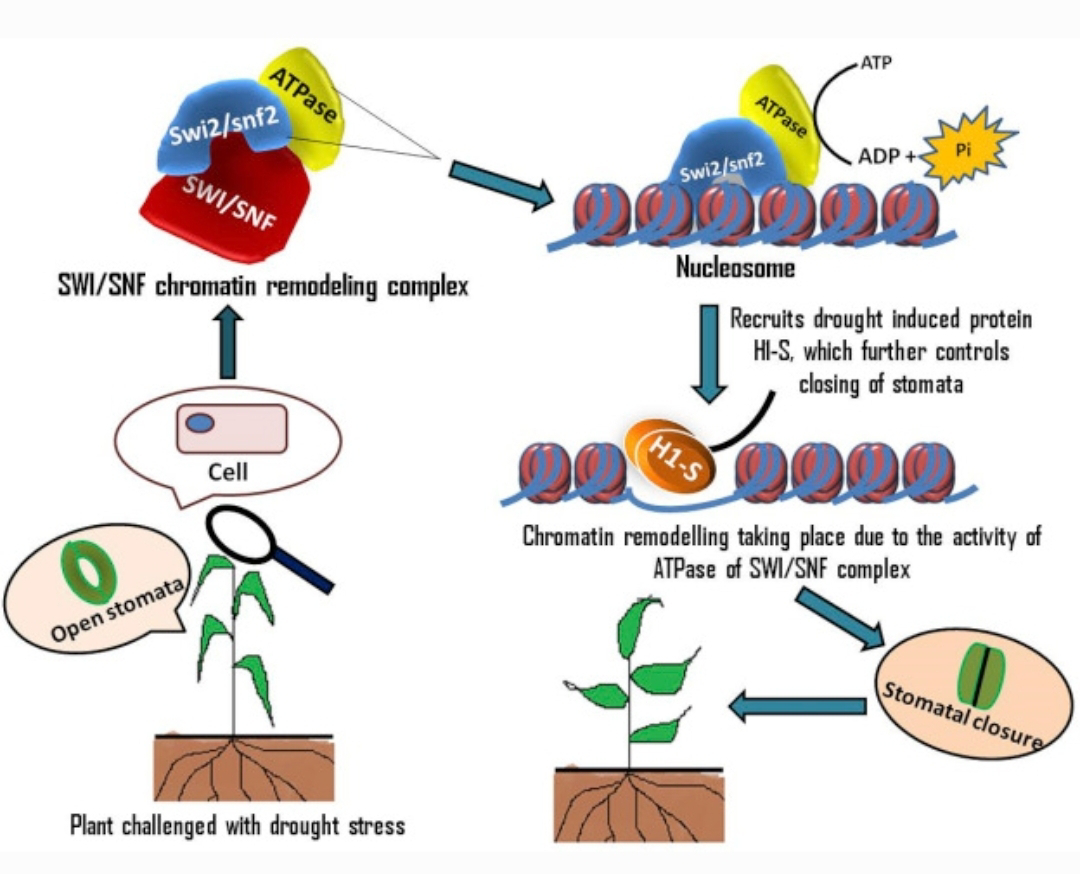Emergence of Phenotypic Plasticity through Epigenetic Mechanisms
Living organisms exhibit a remarkable ability to adapt to their environment. This phenomenon, known as phenotypic plasticity, allows individuals to express different phenotypes (observable traits) based on the conditions they encounter. While the underlying genetic code remains constant, the environment can influence how these genes are expressed, leading to a diverse range of phenotypes within a single genotype. This journal entry delves into the fascinating role of epigenetics in mediating phenotypic plasticity, providing a deeper understanding of how organisms fine-tune their traits in response to environmental cues.
Deciphering the Dance: DNA vs. Epigenetics
Traditionally, phenotypic variation has been attributed to alterations in the DNA sequence itself, through mechanisms like neo darwinian random mutations and gene shuffling during sexual reproduction. However, the advent of epigenetics has revolutionized our understanding of how organisms achieve phenotypic plasticity. Epigenetics refers to heritable changes in gene expression that do not involve changes in the DNA sequence itself. These modifications act as a layer of control on top of the genetic code, influencing how genes are accessed and utilized by the cell.
Key Epigenetic Players: Beyond DNA Methylation
Several epigenetic mechanisms contribute to phenotypic plasticity. One of the most well-studied is DNA methylation, where methyl groups are added to specific regions of DNA. This process can silence gene expression by preventing the binding of essential transcription factors, effectively putting a "stop sign" on gene activity. Conversely, demethylation of DNA promotes gene expression by allowing access to the transcriptional machinery.
However, the story of epigenetics goes beyond just DNA methylation. Histone modifications play a crucial role as well. Histones are proteins that package DNA into tightly coiled structures called chromatin. Modifications to the chemical structure of histones, such as acetylation and methylation, can alter chromatin accessibility. Open chromatin allows for easier access by transcription factors, facilitating gene expression. Conversely, condensed chromatin restricts access and dampens gene activity. The interplay between DNA methylation and histone modifications creates a dynamic landscape that regulates gene expression and contributes to phenotypic plasticity.
Environmental Cues Shape Epigenetic Landscapes: Examples Across Kingdoms
Epigenetic modifications are not static and can be influenced by environmental cues. Here, we explore some captivating examples across different kingdoms of life:
Plants and Drought Stress: Plants exposed to drought stress may undergo DNA methylation changes at specific loci, leading to the activation of genes involved in water conservation. One such example is the activation of genes responsible for stomatal closure, a process that limits water loss through leaves.
Animals and Nutritional Deficiencies: Animals experiencing nutritional deficiencies might exhibit altered histone modifications, resulting in the downregulation of genes responsible for energy-intensive processes. This allows the organism to conserve energy reserves during periods of limited food availability.
Social Insects and Caste Determination: In social insects like honeybees, epigenetic modifications play a crucial role in caste determination. Worker bees and queens share the same genetic code, but differences in DNA methylation patterns at specific genes lead to the development of distinct phenotypes with specialized behaviors
These examples highlight how organisms across the biological spectrum "read" their environment and translate these messages into epigenetic modifications that ultimately shape their phenotype.
The Power of Transgenerational Effects: A Legacy Beyond Genes
A particularly intriguing aspect of epigenetics is its potential for transgenerational effects. In some cases, environmentally-induced epigenetic modifications can be passed down to offspring, even though the underlying DNA sequence remains unchanged. This phenomenon suggests a form of "environmental memory" where organisms inherit epigenetic marks that influence their development and phenotype across generations. For instance, studies in rodents have shown that exposure to stress during pregnancy can lead to epigenetic changes in the offspring that influence their stress response in adulthood.
The study of transgenerational epigenetics is still in its early stages, but it raises fascinating questions about how environmental factors can shape not only the lives of individuals but also the fate of their descendants. Understanding the mechanisms of transgenerational epigenetic inheritance and its ecological and evolutionary implications is a promising area of ongoing research.
Evolutionary Implications of Epigenetic Plasticity: A Boon for Adaptation
Phenotypic plasticity mediated by epigenetics offers several advantages from an evolutionary standpoint. First, it allows for rapid adaptation to environmental changes without requiring changes in the DNA itself as with neo darwinism. This can be crucial for survival in fluctuating environments where a fixed phenotype might be detrimental. Imagine a desert lizard that can adjust its camouflage based on the color of the sand – a valuable ability for avoiding predators that relies on epigenetic regulation rather than a complete genetic overhaul.
Second, epigenetics provides a layer of fine-tuning, allowing organisms to adjust their response based on the specific details of their environment. For example, a plant might respond differently to a short period of drought compared to a prolonged dry spell, with epigenetic modifications facilitating a more nuanced response based on the severity of the environmental stress.
Finally, the potential for transgenerational effects can lead to the pre-adaptation of offspring to certain environmental conditions.
Emergence of Phenotypic Plasticity through Epigenetic Mechanisms: A Challenge to Neo-Darwinism?
This research suggests that organisms can adapt to their environment not just through genetic mutations, as championed by Neo-Darwinism, but also through these epigenetic changes.
Neo-Darwinism, a core tenet of modern evolutionary theory, emphasizes the role of random mutations and natural selection in driving adaptation. Organisms with favorable mutations are more likely to survive and reproduce, passing these mutations on to future generations. This gradual accumulation of genetic changes leads to the emergence of new species over time.
The concept of phenotypic plasticity through epigenetics throws a wrench into this traditional view. Epigenetic modifications can be induced by environmental factors like temperature, diet, or even parental experiences. These changes can then influence the expression of genes, leading to phenotypic changes in the organism without random mutations and natural selection. Here's the challenge:
Rapidity of Adaptation: Epigenetic modifications can occur within a single generation, allowing for much faster adaptation to environmental changes compared to the slower process of genetic mutation and selection. This raises questions about the relative importance of each mechanism in evolution.
Inheritance of Acquired Traits: While the modifications themselves aren't directly passed on to offspring, research suggests that epigenetic marks can influence gene expression in subsequent generations. This challenges the Neo-Darwinian view of inheritance being solely based on DNA sequence.
The discovery of this new layer of complexity necessitates a reevaluation of how we understand adaptation and inheritance. Future research will be crucial in elucidating the precise interplay between genetic and epigenetic mechanisms in shaping the evolutionary process.









Comments
Post a Comment